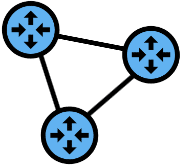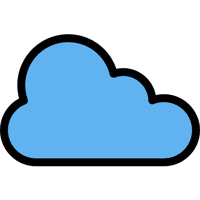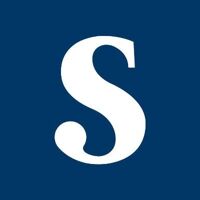Expertise
I know a thing or threeRouting ProtocolsI have studied key routing protocols including RIPv2
(supports CIDR and multicast updates), OSPFv2, and IS-IS (used
for forwarding datagrams). This knowledge enables me to design
efficient and secure networks.
Network AutomationI’m skilled in network automation with Ansible, understand
SDN, and the roles of the control, data, and management planes
in networking. I also have experience with Git for version
control. This enables effective network operation
automation.
Cloud ComputingI have practical skills in cloud computing, including
deploying webservers on AWS EC2 instances. I understand cloud
structures, firewalls, security groups, and Network Access
Control Lists. I’m familiar with the SaaS, PaaS, and IaaS
cloud models.
Certificates
Proof of my proficiencyCert 1A bunch of text about my cert
AWS Academy Cloud DevelopingThe AWS Academy Cloud Developing program prepares students
for the AWS Certified Developer exam. It covers topics like
cloud computing, AWS development, AWS Identity and Access
Management, Amazon S3, DynamoDB, caching, containers, Lambda,
API Gateway, SQS, SNS, Step Functions, and secure application
development.
Cert 3A bunch of text about my cert
Projects
Demonstrations of My ExpertiseCert 1A bunch of text about my cert
OptiDeals Ai Web Scraping Recipe Generation SystemRevolutionizing Meal Planning. OptiDeals, a groundbreaking
app, transforms the way you plan meals and shop for groceries.
Leveraging real-time deals from Ontario grocers and the power
of OpenAI, it customizes your weekly meals, saving you both
time and money. It’s not just an app, it’s your personal
financial chef, ensuring you eat well without breaking the
bank.
Cert 3A bunch of text about my cert
Education
Computing and Network Communications (Honours) Degree/DiplomaBrock UniversityJoin me on my academic journey through the fields of computer
science and mathematics at Brock University. From the
fundamentals of programming to the complexities of data
structures, from the ethical dimensions of internet
information to the intricacies of calculus and linear algebra,
I’ve delved into it all. Click on each course to learn more
about my experiences and the knowledge I’ve gained. Together,
let’s explore the future of technology!
COSC 1P02
Introduction to Computer Science ->This course provided a foundational understanding of computer science and computer programming using a high-level language, typically Java. Topics covered included computer fundamentals, information representation, problem-solving, software development, programming language syntax and semantics, methods, input/output, control structures, and data types.
Introduction to Computer Science ->This course provided a foundational understanding of computer science and computer programming using a high-level language, typically Java. Topics covered included computer fundamentals, information representation, problem-solving, software development, programming language syntax and semantics, methods, input/output, control structures, and data types.
MATH 1P66
Mathematical Reasoning ->This course provided an introduction to mathematical reasoning, logic, and proofs, including the use of mathematical induction. Basics of set theory were also covered.
Mathematical Reasoning ->This course provided an introduction to mathematical reasoning, logic, and proofs, including the use of mathematical induction. Basics of set theory were also covered.
COSC 1P03
Introduction to Data Structures ->This course further developed programming and problem-solving skills using a high-level programming language (usually Java). The focus was on data structures such as arrays and linked lists. Students learned about modularity, abstraction, and abstract data types, including stacks, queues, and lists. Introduction to searching and sorting algorithms, recursion, algorithm analysis, and object-oriented programming was also covered.
Introduction to Data Structures ->This course further developed programming and problem-solving skills using a high-level programming language (usually Java). The focus was on data structures such as arrays and linked lists. Students learned about modularity, abstraction, and abstract data types, including stacks, queues, and lists. Introduction to searching and sorting algorithms, recursion, algorithm analysis, and object-oriented programming was also covered.
MATH 1P67
Mathematics for Computer Science ->This course focused on the development and analysis of algorithms, complexity of algorithms, recursion, solving recurrence relations, and the study of relations and functions.
Mathematics for Computer Science ->This course focused on the development and analysis of algorithms, complexity of algorithms, recursion, solving recurrence relations, and the study of relations and functions.
COSC 1P50
Integrity and Literacy in Information Age ->This course addressed various issues related to the use of information technology. Topics included historical and social perspectives, legal, ethical, and moral considerations, intellectual property, licensing, copyright, privacy, freedom of expression, and professional conduct. The course also emphasized information literacy, with seminars and written work, requiring a good command of written and spoken English.
Integrity and Literacy in Information Age ->This course addressed various issues related to the use of information technology. Topics included historical and social perspectives, legal, ethical, and moral considerations, intellectual property, licensing, copyright, privacy, freedom of expression, and professional conduct. The course also emphasized information literacy, with seminars and written work, requiring a good command of written and spoken English.
MATH 1P97
Calculus With Applications ->This calculus course covered topics such as lines, polynomials, logarithms, exponential functions, limits, derivatives, optimization, integrals, and differential equations. It emphasized applications in various disciplines and the use of computer algebra systems.
Calculus With Applications ->This calculus course covered topics such as lines, polynomials, logarithms, exponential functions, limits, derivatives, optimization, integrals, and differential equations. It emphasized applications in various disciplines and the use of computer algebra systems.
MATH 1P12
Applied Linear Algebra ->This course concentrated on systems of linear equations, matrix algebra, determinants, vector geometry in R2 and R3, complex numbers, and linear transformations. It included applications of linear algebra to different sciences and integrated the use of computer algebra systems.
Applied Linear Algebra ->This course concentrated on systems of linear equations, matrix algebra, determinants, vector geometry in R2 and R3, complex numbers, and linear transformations. It included applications of linear algebra to different sciences and integrated the use of computer algebra systems.
MATH 1P98
Practical Statistics ->The course covered descriptive statistics, probability, probability distributions (binomial, Poisson, and normal), Central Limit Theorem, confidence intervals, hypothesis testing, analysis of variance, and correlation and regression. The focus was on real-world applications, and statistical computer software was used.
Practical Statistics ->The course covered descriptive statistics, probability, probability distributions (binomial, Poisson, and normal), Central Limit Theorem, confidence intervals, hypothesis testing, analysis of variance, and correlation and regression. The focus was on real-world applications, and statistical computer software was used.
COSC 2P03
Advanced Data Structures ->This course delved into the implementation and usage of advanced data structures, including trees, graphs, hash tables, and advanced list structures. Further topics covered included sorting and searching algorithms, recursion, and algorithm analysis.
Advanced Data Structures ->This course delved into the implementation and usage of advanced data structures, including trees, graphs, hash tables, and advanced list structures. Further topics covered included sorting and searching algorithms, recursion, and algorithm analysis.
COSC 2P12
Introduction to Computer Architecture ->This course explored the evolution of digital computers and their organization, including functional units, instruction cycle, control, buses, and memory. It covered instruction types and memory access, instruction sequencing, call/return mechanisms, and basic assembly language programming.
Introduction to Computer Architecture ->This course explored the evolution of digital computers and their organization, including functional units, instruction cycle, control, buses, and memory. It covered instruction types and memory access, instruction sequencing, call/return mechanisms, and basic assembly language programming.
Sheridan CollegeDive into my enriching journey at Sheridan College, where I
expanded my knowledge in computer science and network
engineering. From Wi-Fi networks to cloud computing, from data
modelling to network automation, I’ve explored it all. Click
on each course to learn more about my experiences and the
practical skills I’ve acquired. Let’s navigate the world of
technology together!
TELE20102
Wi-Fi Networks ->In this course, I delved into the world of Wi-Fi Networks, gaining a comprehensive understanding of wireless LAN technologies, including IEEE 802.11 standards, physical layer fundamentals, radio frequency characteristics, and network security.
Wi-Fi Networks ->In this course, I delved into the world of Wi-Fi Networks, gaining a comprehensive understanding of wireless LAN technologies, including IEEE 802.11 standards, physical layer fundamentals, radio frequency characteristics, and network security.
TELE20049
Network Services and Protocols ->I learned about a wide range of network services and protocols, focusing on practical implementation and analysis. This course equipped me with essential skills to effectively manage network infrastructures and ensure seamless communication and security.
Network Services and Protocols ->I learned about a wide range of network services and protocols, focusing on practical implementation and analysis. This course equipped me with essential skills to effectively manage network infrastructures and ensure seamless communication and security.
TELE28648
Network Engineering 1 ->This course covered a comprehensive range of topics related to network engineering. I learned about IP addressing, subnetting, CIDR, and explored Internet Protocol v4 and v6. I also studied static routing, router architecture basics, and dynamic routing protocol principles.
Network Engineering 1 ->This course covered a comprehensive range of topics related to network engineering. I learned about IP addressing, subnetting, CIDR, and explored Internet Protocol v4 and v6. I also studied static routing, router architecture basics, and dynamic routing protocol principles.
TELE31831
Network Engineering 2 ->I gained an in-depth understanding of IP addressing, routing protocols, and their implementation in routers and switches. I learned about OSPF and IS-IS protocols, and how to design interconnected routing areas. I also acquired skills in designing efficient IP address allocation schemes using VLSM and CIDR, implementing hierarchical routing with OSPF, and using different interface types for connectivity. Additionally, I learned to implement basic security in routing, including authentication in routing advertisements, and was equipped with the ability to install and configure network monitoring tools, analyze OSPF packets, and troubleshoot routing networks. This course significantly enhanced my ability to manage complex network infrastructures.
Network Engineering 2 ->I gained an in-depth understanding of IP addressing, routing protocols, and their implementation in routers and switches. I learned about OSPF and IS-IS protocols, and how to design interconnected routing areas. I also acquired skills in designing efficient IP address allocation schemes using VLSM and CIDR, implementing hierarchical routing with OSPF, and using different interface types for connectivity. Additionally, I learned to implement basic security in routing, including authentication in routing advertisements, and was equipped with the ability to install and configure network monitoring tools, analyze OSPF packets, and troubleshoot routing networks. This course significantly enhanced my ability to manage complex network infrastructures.
SYST35144
Cloud Computing ->I studied various aspects of cloud computing, including AWS Elastic Cloud Compute EC2, AWS Cloud Access Control, AWS Virtual Private Cloud VPC, and AWS Elastic Load balancer and Auto Scaling Groups. I also learned about Docker Containers and Kubernetes.
Cloud Computing ->I studied various aspects of cloud computing, including AWS Elastic Cloud Compute EC2, AWS Cloud Access Control, AWS Virtual Private Cloud VPC, and AWS Elastic Load balancer and Auto Scaling Groups. I also learned about Docker Containers and Kubernetes.
DBAS14444
Structured Data Modelling ->This course introduced me to the database environment and development process. I learned about database design terminology, data modeling, and its importance. I also gained hands-on experience in SQL and its importance in database management and development.
Structured Data Modelling ->This course introduced me to the database environment and development process. I learned about database design terminology, data modeling, and its importance. I also gained hands-on experience in SQL and its importance in database management and development.
INFO34049
Capstone Prototype ->In the first part of this two-part class, I applied my knowledge in computer science, software engineering, and network engineering to create a prototype for my capstone project, OptiDeals. This app demonstrates my proficiency in web scraping, AI, Git workflows, and self-hosting. I scraped real-time deals from Ontario grocers' websites, used AI to generate personalized meal plans, managed code versions with Git, and hosted the app on my own server. This challenging and rewarding experience allowed me to showcase my skills and creativity. I'm proud of OptiDeals and look forward to refining it in the next part of the class.
Capstone Prototype ->In the first part of this two-part class, I applied my knowledge in computer science, software engineering, and network engineering to create a prototype for my capstone project, OptiDeals. This app demonstrates my proficiency in web scraping, AI, Git workflows, and self-hosting. I scraped real-time deals from Ontario grocers' websites, used AI to generate personalized meal plans, managed code versions with Git, and hosted the app on my own server. This challenging and rewarding experience allowed me to showcase my skills and creativity. I'm proud of OptiDeals and look forward to refining it in the next part of the class.
TELE35376
Carrier Networks -> In this course, I deep-dived into interpreting Hex Data, TCP, QoS, and other related topics. This course provided me with a comprehensive understanding of the transport layer in the OSI Model.
Carrier Networks -> In this course, I deep-dived into interpreting Hex Data, TCP, QoS, and other related topics. This course provided me with a comprehensive understanding of the transport layer in the OSI Model.
TELE36058
Software Defined Networks ->In this course, I studied automation using ansible, netmiko, terraform, and software-defined networks. This course equipped me with practical knowledge and skills in network automation.
Software Defined Networks ->In this course, I studied automation using ansible, netmiko, terraform, and software-defined networks. This course equipped me with practical knowledge and skills in network automation.
Experience
Lorem ipsum dolor sit amet Lorem ipsum dolor sit amet
Lorem ipsum dolor sit amet Lorem ipsum dolor sit amet
Lorem ipsum dolor sit amet Lorem ipsum dolor sit amet
Lorem ipsum dolor sit amet aulla quis sem at nibh
elementum
Lorem ipsum dolor sit amet Lorem ipsum dolor sit amet
Lorem ipsum dolor sit amet Lorem ipsum dolor sit amet







